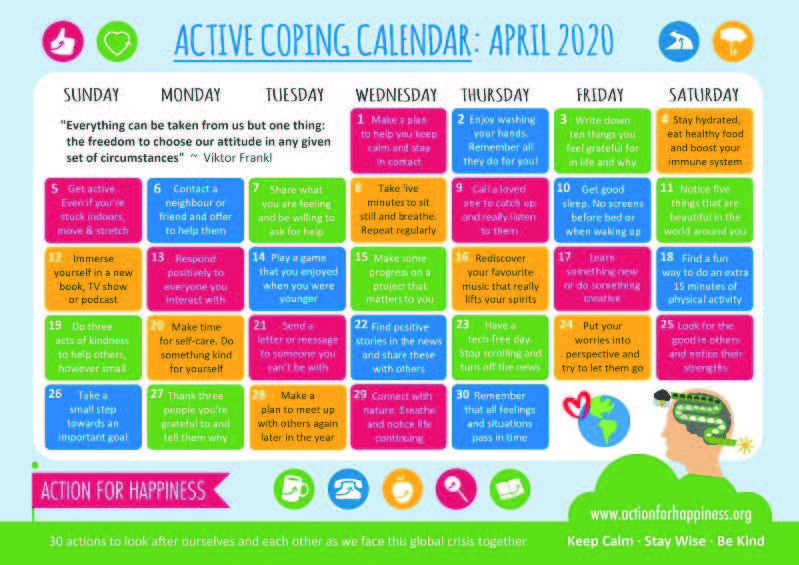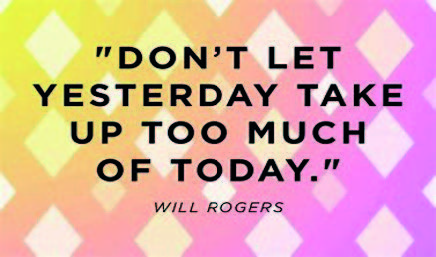Dealing with worry in difficult times

Why this booklet? We hope this booklet gives you some basic ideas to look after your well being and point you toward other resources that might help.You decide what will be helpful for you.
Dealing with Worry in Difficult Times
Worry is a normal emotion. When it takes over it can become overwhelming. Worry isn’t just in our heads. When excessive, we can feel it in our bodies too: Can’t Relax, Restless, Tense Muscles, Trouble Sleeping. When stress becomes too much is, we are not thinking straight. We talk about this in the handout Stress, Trauma and the Brain.
What is worry?
As human beings we can think ahead. We anticipate problems. ‘Thinking ahead’ is helpful when helps us to solve problems and achieve goals. However, ‘thinking ahead with a negative lens’ can leave us feeling anxious. When worry gets out of control, we often think about the worst that could happen or that we can’t cope. Like a chain, these thoughts can increase. Like a snowball rolling down a hill it affects us both physically and mentally.
What triggers worry?
Anything can be a trigger for worry. Even when things go right, you can think to yourself “what if it all goes wrong?” What can increase worry? What if things are:
- Uncertain – not sure how it will turn out
- New – we don’t have any experience to fall back on
- Unpredictable – what will happen is outside your control.
It makes sense that people are experiencing a lot of worry with what is happening in the world. It is an
unusual situation with a lot of uncertainty.
Are there different types of worry?
Worry can be helpful or at times unhelpful. There is a difference between worries that are ‘real problems’ vs. ‘worst case problems.
- Real problem worries are about actual problems that things we can do something about
- Worst case worries are when we think the worst. Basically, it is our thinking that makes it
bigger than it needs to be.

When does worry become a problem?
Everyone worries to some degree. There is no right or wrong amount of worry. Worry becomes a problem when it gets in the way of you doing what you want or affecting your life leaving you feel down or exhausted.
Taking the current situation lets apply this. Which can you do something about and what would
increase worry? Real problem worries: “My children are off school, and I need things to keep them busy. “I don’t have enough food in the house.” Worst case worries: “This problem is going to last forever.”
What can I do about worry?
It is natural for anyone to worry and this current situation is no exception. These are uncertain times. But if you feel that it’s becoming excessive and affecting you, it will help to look after your wellbeing and worry less. Here are a few ideas and links to web pages we think can help you.

Decide if a worry is ‘real problem’ worry, or a ‘worst-case worry’
If you’re experiencing lots of ‘worst case worries’ are you over thinking it? Remind yourself that you are focusing on a problem that you can’t solve right now. Find ways to let the worry go and focus on something else. This helps children too.
Decide if this a real problem worry that you can do something about right now? If you can’t do anything about it now, focus on: What is in front of you, not what is ahead of you or behind you.
YES – Take action now: Make a plan with small steps to get it done
NO – Redirect your attention to the present by mindfulness, distraction, singing, laughter.
Someone told us you can’t worry when you are singing an uplifting song. Go on. Try it.
Strengthen your resilience
Resilience is the ability to adapt in hard times. Working on your resilience can be supported by
looking at how you see situations, create thinking time, use that thinking time to look and choose
options, staying realistically optimistic, use support and choose how you look after yourself.
The workbook Bend Don’t Break is a tool people have found helpful to build their resilience. It can give you a range of ideas to work on.
It can be downloaded at http://www.setrust.hscni.net/pdf/Bend%20Dont%20Break%20%202019booklet.pdf
Using positive emotions to deal with stress
Eight ways to express positive emotion has been shown to help deal with stress. Why does it work? Dopamine pathways (the chemical in are brain linked with pleasure) are active when you are experiencing positive emotions. Coping and problem solving are strengthened. Here are the 8 ways used to experience positive emotions:
- Notice positive things
- Express these positive things
- Gratitude
- Mindfulness
- Positive rethinking
- Focus on your strengths
- Attainable goals
- Acts of kindness
To download this in more detail see: http://fsn.ie/uploads/research_files/Ed_Sipler_Workshop_Handout.pdf
Take 5 is another tool to support well being:https://www.publichealth.hscni.net/publications/take-5-steps-wellbeing-english-and-11-translations
Keep building yourself up and strengthening your well being
Keeping Safe,Keeping Well : Skills to Support Wellbeing and Recovery are worksheets to work on things to support recovery like:
- Strengthening resilience
- Dealing with emotions
- Stress, trauma and healing
- Preventing relapse – for people in recovery
from addiction.
Dealing with emotions may important to look at for lots of reasons. Not being having your usual activities can impact mood. The skills above follow sayings you might have heard before:
- This too shall pass Feelings are temporary
- Name to claim it. Naming what we are feeling
helps us think.
Relaxed breathing and grounding help bring you back to the present. Focus your attention on 5
things you can see, 3 or 4 things you can hear 1 or 2 things you can smell or taste. To download this booklet, see the South Eastern HSC Trust’s website under the Healthy Living tab and building resilience
Maintain balance in your life
Well-being comes with from a balance of things that give you feelings of pleasure, achievement,
and connection. We are social animals who need connections to thrive. Try to do some activities that involve other people. In times like these you might have to find some creative ways to do social things at a distance like keeping in touch online or by phone. For a calendar of ideas to support wellbeing see.
You can decide what will work for you. https://www.actionforhappiness.org/active-april

So, a key message from this booklet
When you are aware of worrying taking over:
- Decide what you can do something about and what you can’t
- Redirect your attention to the present by becoming mindful of what is around you. Use your senses (sight, sound, touch, smell, taste)
- Decide whether worries are ‘real problem worries’ that you can act on now, or whether they are those ‘worst-case worries’. The Serenity Prayer is useful here.
- Are your worries a problem that you can look for a solution for? If not, let it go.

Practice mindfulness
Learning and practicing mindfulness can help us to let go of worries and bring ourselves back to the present moment. A description of mindfulness is in Keeping Safe,Keeping Well: Skills to Support Wellbeing and Recovery.
Here is one idea: Relaxed breathing (try to practice this regularly)
When we are anxious or threatened our breathing speeds up to get our body ready for danger. Relaxed breathing can help tell the body that it is safe to relax. Relaxed breathing is slower and deeper than normal breathing.
- Sit or lie comfortably
- Close your eyes if you can
- Try to breathe through your nose rather than your mouth
- Breath from your belly, not your chest
- Deliberately slow your breath down. Breathe counting to 4, pause for a moment, then
breathe out to a count of 4 or 5 - Make sure your breaths are smooth, steady and continuous
- Pay particular attention to your out breath.
Other things you can do
Set a routine: Keep regular times for waking up, getting dressed, eating, going to bed.
Stay mentally and physically active: When you plan your day include things that keep both your
mind and body active.
Notice and limit worry triggers: Does watching the news or checking social media increase worry?
Limit worry triggers where you can like choosing when you watch the news or use social media.
Feeling claustrophobic or trapped: Spending long times indoors can be difficult. Open the
windows to let in fresh air. Sit on your doorstep, or garden and look at the sky. Change rooms you
spend time in.
Reducing conflict: Long periods of time with others can be difficult. To help reduce conflict, have
a designated area of personal space to retreat to, have honest conversations about things that irritate
or frustrate you, establish ground rules and choose your battles and words with thought.
Practice gratitude: At times of uncertainty, being grateful for what you have can help you to connect
with joy and pleasure. Each day take time to reflect on what you are thankful for. We think this so useful we have included some ideas from Keeping Safe, Keeping Well: Skills to Support Wellbeing and Recovery.
Count your daily blessings: a way to look at positive things in your life
Positive emotions create Dopamine, the chemical in our brains linked to pleasure. When we do this regularly and purposefully, we improve both Dopamine receptors and Dopamine pathways in
our brains.
Choose what was positive for you each day. They are there if we have our eyes open to them.
When did I feel grateful today?
What made me smile today?
What made me laugh out loud today?
What did I learn today?
What did I enjoy listening to today?
What beauty did I see today?
What simple pleasure did I enjoy today?
What weakness was I able to keep in check today?
How was I able to help others today?
How did I move forward on an important goal or value?
What unhelpful thoughts, beliefs, or emotions was I able to deal with today?
What problem did I resolve today?
What’s the silver lining to something that went wrong today?
What did I do today that was fun?

Handouts and resources (not by any mean an exhaustive list)
If in crisis Lifeline 0808 808 8000 www.lifelinehelpline.info
Keeping Safe,Keeping Well : Skills to Support Wellbeing and Recovery
can be found at the South Eastern Trust Website Under the healthy
living tab in the building resilience section
Bend Don’t Break: Building Skills that Supports Resience http://www.setrust.hscni.net/pdf/Bend%20Dont%20Break%20%202019booklet.pdf
Stress, Trauma and the Brain and Ideas for Healthing handouts
https://stepstocope.co.uk/wp-content/uploads/2019/09/stress-traumafs03-nov-final.pdf
For ideas on healing see: https://www.safeguardingni.org/sites/default/files/sites/default/files/imce/FS%204%20-%20STRESS%20TRAUMA%20AND%20YOUR%20BRAIN.PDF
Positive Emotions to Deal with Stress
http://fsn.ie/uploads/research_files/Ed_Sipler_Workshop_Handout.pdf
For alcohol and drug issues
AA Phone: 028 9035 1222 Website: Alcoholics Anonymous
NA https://www.na-northernireland.org/support/
Alcohol and You; A range of information and on line self help
Cannabis and You: on line Self help for cannabis use www.canabisandyou.ie
Breaking free – on line support for recovery For service users to create an account visit www.breakingfreeonline.com Click SIGN UP Use the access code: belfast2020 to complete the required fields. Created by Ed Sipler, Health Development / Addiction Services South Eastern HSC Trust Designed by Publications / Communications Department Steps to Cope Information and self help for young people affected by their parents mental health or substance use www.stepstocope.co.uk
For family members; Taking the Lid Off and the Pocket Guide for Family members
http://www.setrust.hscni.net/pdf/Taking_the_lid_off_book.pdf
Mental Health Support:
The Public Health Agency (PHA) directory of all mental health services
https://www.publichealth.hscni.net/publications/directory-services-helpimprove-mental-health-and-emotional-wellbeing
The Samaritans webpage with information during the coronavirus
outbreak https://www.samaritans.org/how-we-can-help/support-andinformation/worried-about-someone-else/if-youre-worried-aboutsomeone-else-during-coronavirus-outbreak/
https://www.mindingyourhead.info. has lists of support services and downloadable resources including leaflets and fact sheets Self -help for mental health problems. www.setrust.hscni.net/healthyliving/2416.htms















Responses